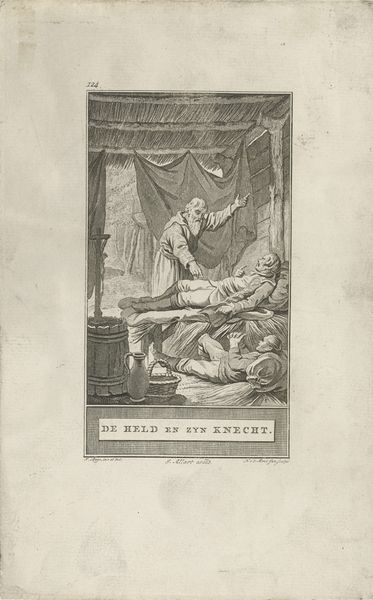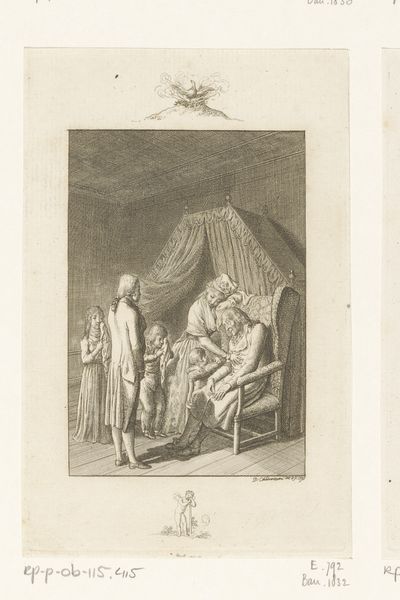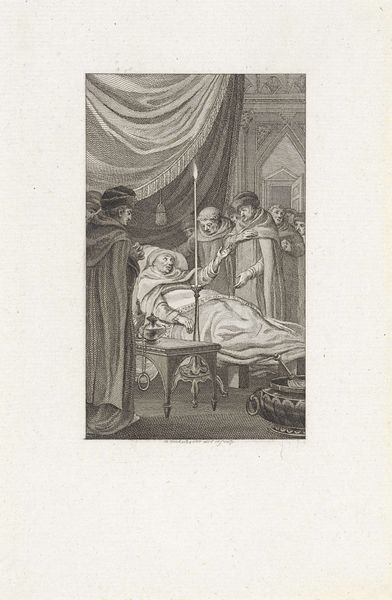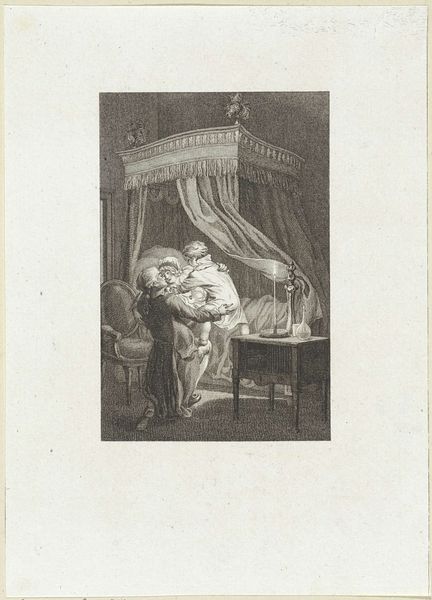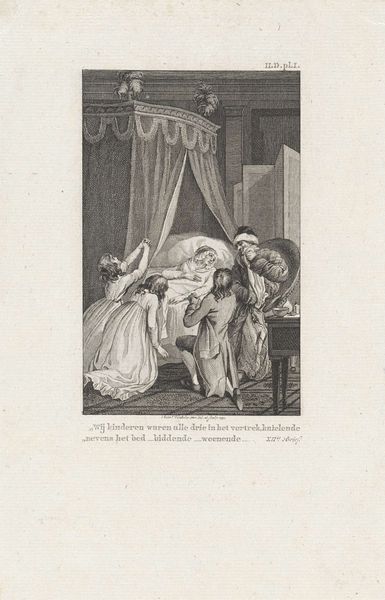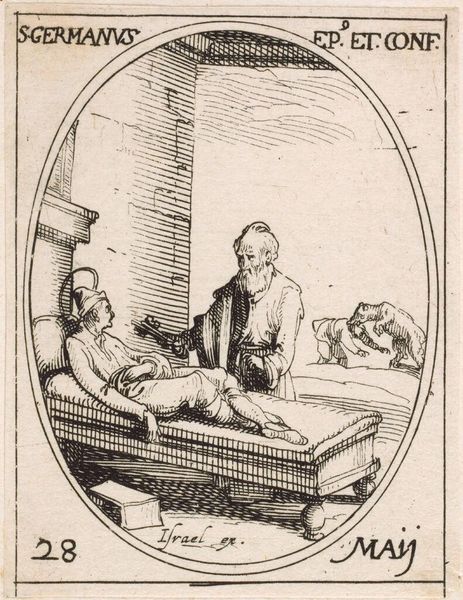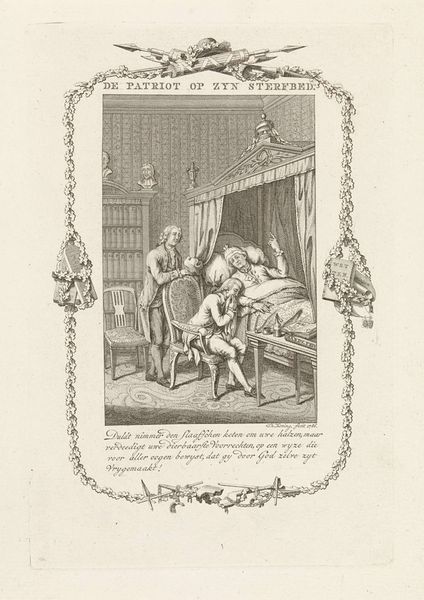
print, engraving
# print
#
caricature
#
romanticism
#
history-painting
#
engraving
Dimensions: height 330 mm, width 245 mm
Copyright: Rijks Museum: Open Domain
Curator: This print, titled "Napoleon's English Nightmare, 1813", dates from between 1813 and 1814, an engraving that speaks volumes about the political climate of the time. Editor: Visually, my first impression is stark—the monochromatic rendering heightens the unsettling mood of the piece. There's a sense of claustrophobia created by the sharp, linear perspective within the confines of that bedchamber. Curator: The composition is ripe with symbolism. Notice how Napoleon is pinned beneath the bulldog—a clear representation of England—his military uniform contrasting sharply with the domestic setting. The dream becomes a powerful critique of his failed ambitions, playing on the cultural anxieties of the time. It's a deeply patriarchal vision. Editor: The texture of the engraving, particularly in the depiction of the dog and the drapery, is remarkably detailed, providing visual interest in every section of the print. The lines are so precise; they establish depth and shadow expertly despite the monochrome palette. Curator: Indeed. This level of detail is intentional; by hyper-realizing the scene, the artist amplified the commentary. The dog’s collar, seemingly a sign of British restraint, simultaneously emphasizes their dominance and the leashed potential for aggression against Napoleon’s reign. The nightmare, thus, transcends mere bad dreams, suggesting deeper psychological and societal consequences. It's a portrait of political and sexual emasculation. Editor: Focusing solely on its form, it's fascinating how the artist utilizes contrasting textures to differentiate between the figures. The smoothness of Napoleon's face juxtaposed against the roughness of the bulldog's fur creates a tactile distinction. This contrast not only animates the image, but is suggestive of the very real difference in power between them. Curator: What the image communicates to a contemporary audience is Napoleon as a product of deeply embedded colonial power structures. Even at rest, even in dream, there's no relief from the oppressive powers. I do wonder if the work at the time resonated beyond circles of political elite; in other words, whom was this commentary "for?" Editor: Whether appreciated by all or some, its visual language presents a very effective method of communicating potent and complex social sentiments through form. I find the stark representation especially compelling. Curator: Considering our points, perhaps we can propose that “Napoleon's English Nightmare, 1813" offers a narrative extending far beyond the personal anxieties of a political leader. It encapsulates an era's collective fears and societal attitudes, solidified in its striking visual components. Editor: A superb visual testament to the age!
Comments
No comments
Be the first to comment and join the conversation on the ultimate creative platform.


